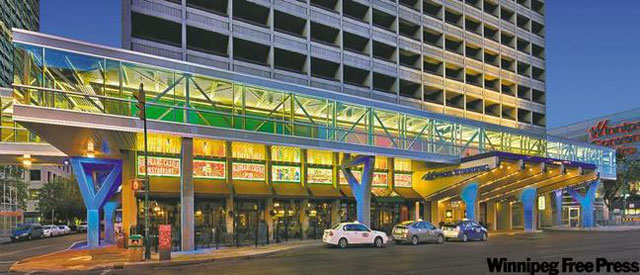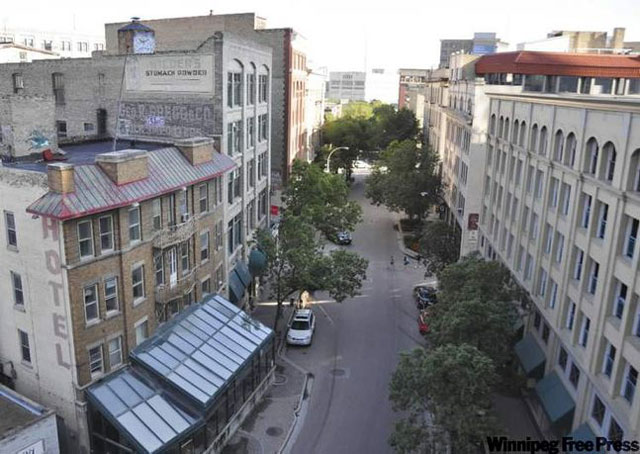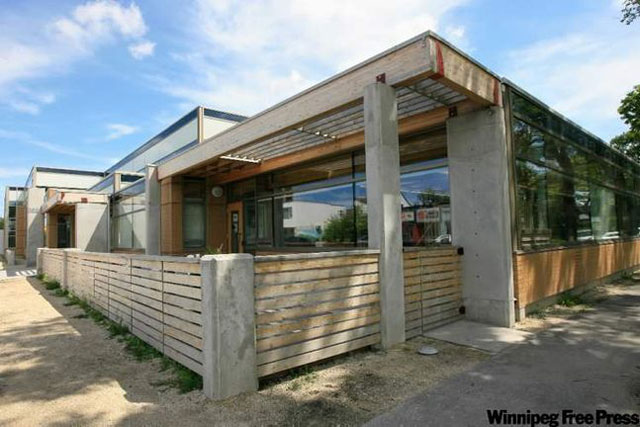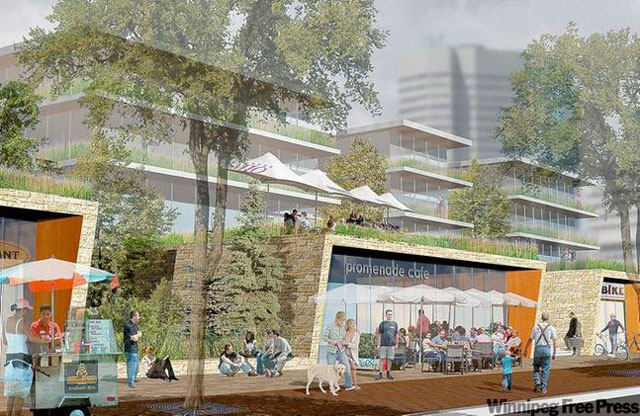Shining a light on downtown - Illumination can reinvigorate city
- Details

In 1820, Paris established itself as the 'City of Light' when it became one of the first in the world to illuminate its streets with gas lanterns. This transformed the character, economy and culture of the city as it came alive at night with shops and cafés remaining open long after dark. The soft orange light cast on the limestone buildings was considered so beautiful it inspired the works of impressionist painters like Renoir and Van Gogh.
Over the next two centuries, urban lighting across the world has most often been considered from a purely functional perspective, flooding streets and buildings with consistent, high-intensity light. With the emergence of new technologies, exterior lighting is again becoming an inspiring urban feature and creative extension of architectural design. Good architecture transforms itself as light conditions change around it. A unique example of this is the Buhler Centre on Portage Avenue by DPA+PSA+DIN Collective, which creatively uses metal tabs as nighttime reflectors, subtly animating the façade as they capture the moving light of passing cars.
Pedestrian mall? Groovy, man - Cities turn to '70s trend to lure people
- Details

Every year at the height of summer, the Fringe Festival invades Winnipeg and the cobblestone sidewalks of the Exchange District come alive as artists' kiosks, shops and restaurants overflow with people late into the evening.
It's almost as if, for a short time, our tranquil warehouse district masquerades as a little piece of New York's Greenwich Village. When the Fringe moves on and the streets again fall quiet, we are left to wonder what might be done to capture a small piece of that vibrancy and maintain it throughout the year.
Sports facilities help cities avoid 'doughnut' look - They make core a fit place to live
- Details

It's an ironic coincidence that during the last three decades, with the rise in popularity of Tim Hortons, not only are Canadians' collective midriffs beginning to resemble the shape of a doughnut, but so too are many of our cities.
Referred to as the "doughnut effect," places like Winnipeg have seen a migration of population and commerce to the edges of the city, creating an economic void in the centre. As sprawling suburbs and big-box retail centres leapfrog each other outward, the city becomes less dense, less sustainable and weakened at its core. Many once-proud inner-city neighbourhoods now struggle with issues of crime and poverty as a result.
Exchange needs a delicate blend - Development must reflect its historic character
- Details
Many Winnipeggers share the childhood memory of eagerly tearing open the wax-paper wrapping, chewing that stale stick of gum while flipping through a new pack of hockey cards in search of their favourite players.
For most, the trading cards have been lost somewhere in time, but occasionally an old collection forgotten in the back of the closet is uncovered to reveal a valuable link to the past.
Like that collection of old hockey cards, hidden away for years, the buildings of Winnipeg's Exchange District have survived because they had largely been forgotten. Decades of slow growth has meant little pressure to redevelop the area, resulting in a substantially intact collection of historic buildings.
Spanish city model for future Forks
- Details

Imagine a city in the not-too-distant future. A medium-sized city, isolated and far from the power centres of the country.
Clinging to the banks of a muddy old river, the evidence of early prosperity is seen in the rail yards, once its lifeblood. For a century, the trains screeched and smoke billowed from the central yard, but when the asphalt railway took over, the area fell silent.
Over the years, the riverside industrial land was reclaimed as a great public space for the city. The old buildings were transformed into markets, and a waterfront walkway and a dramatic new bridge were built. Park space, a hotel, a theatre and restaurants were all part of the plan.


